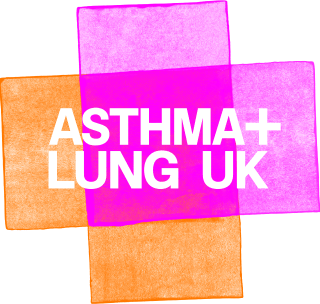The following 10 points state Asthma + Lung UK’s views on vaping and our recommendations for the Government.
This is not a review of the evidence.
Asthma + Lung UK believes that only clean air should be in the lungs
The harmful impact of smoking on the lungs is well documented and we support legislation that will create a smokefree generation.
Vapes are not risk-free and the long term health impacts of vaping on the lungs are not yet clear. Nevertheless, vaping is less harmful than smoking and vapes can be a helpful tool to support smokers in quitting tobacco. However, vapes should not be the final destination point. We must continue working with ex-smokers to move them from vaping to an alternative smoking cessation tool and to stop vaping altogether.
We want to see a smoke-free and vape-free society
There is an increasing number of people that vape having never smoked, including children and young people. This concerns us as we do not want to see anybody vaping, other than for smoking cessation.
We need to recognise the well-documented, severe harms of smoking and the comparatively smaller potential harms of vaping when thinking about regulation and control of both smoking and vaping.
Therefore our policy positions have been developed to balance the risks of vaping, when used other than for smoking cessation, and the unintended consequences of reducing the appeal of vaping to adults trying to stop smoking.
Our recommendations
- We support the Treasury’s recent introduction of a flat-rate tax of £2.20 per 10ml bottle of vape liquid. We suggest an additional minimum unit price, so they are less affordable for children and young people.
Children and young people are highly price sensitive, and the Treasury’s recent introduction of a flat-rate tax of £2.20 per 10ml bottle of vape liquid, to be introduced from October 2026, is a welcome change to price children and young people out of the vape market. However, we suggest an additional minimum unit price that applies to nicotine and non-nicotine containing vapes that would raise the prices of all vapes to at least £10. A minimum price of at least £10 remains cheaper than the average pack of cigarettes, and would make no difference to the reusable vaping market, where prices are already higher, while significantly impacting the single-use market.
This must be accompanied by expansion of the Swap-to-Stop scheme, which should be partly funded by the funds recouped from this tax, to ensure vapes remain an accessible smoking cessation tool for adults on low incomes.
- Implement flavour restrictions for vaping products
Generic flavour descriptions should be implemented immediately as a simple and quick way of reducing the appeal of flavours of vaping products. This has been done in New Zealand, and a similar mandated list of simple flavour names should be used.
We support the Tobacco and Vapes Bill introducing the power to regulate the flavours of vapes and other nicotine products; these restrictions should focus on those flavours that appeal most to children and young people. As part of the consultation for these regulations, we would like to see comprehensive evaluation of international regulations on flavours and their impact. While we agree in principle with restricting vape flavours to tobacco, menthol, and mint, we welcome further evidence showing these regulations effectively deter young people vaping without undermining the role of vaping in smoking cessation. This ensures flavours appealing to children are removed without reducing its cessation benefits for smokers.
- Restrictions on the marketing and advertising of tobacco should be extended to include vapes
To reduce the appeal of vaping products to children and young people, we want to see restrictions on the marketing of vapes including plain packaging and device design, a ban on behind the counter point-of-sale displays, and price promotions to be prohibited (such as "buy one, get one free").
Strict advertising restrictions, in line with tobacco restrictions, should stop the promotion of vapes in both traditional and social media. Social media content should be tightly regulated to ensure it is not promoting vaping as a positive recreational activity and social media platforms should be mandated to implemented safety policies such as warnings on content that contains vaping content, or that appears when searching for vape content.
There is also a need to ensure sufficient funding and capacity for enforcement of these restrictions.
We support the Tobacco and Vapes Bill introducing powers to:
- regulate product features and design of vapes
- regulate point of sale displays for nicotine and non-nicotine vape
- regulate the packaging of vapes and other tobacco and nicotine products
- ban vape product sponsorship and advertising
- ban vape vending machines, all of which will come into force following further consultation and regulations
We also welcome that the Bill bans commercial advertising but permits public health promotion of vapes which should help to address harm misperceptions.
- We support DEFRA’s legislation to introduce a ban on sale and supply of single-use vapes
Data shows the most frequently used vaping device amongst under-18s is single-use vapes, therefore if we are to protect under-18s from vaping, limiting access to single-use vapes is essential.
Their cheap price, as well as their marketing and flavour options, have clearly been designed in a way to appeal to children and young people, rather than to adults looking to quit tobacco. Single use vapes are not necessary to achieve a further decline in smoking rates, with reusable vapes a better option.
In addition, single-use vapes have a negative environmental impact, and both their plastic bodies and their batteries are much harder to recycle than reusable vapes.
Limiting the sale and supply of single-use vapes will make it harder for children and young people to vape, while adults looking to quit tobacco can transition onto reusable vapes. Therefore we support DEFRA’s legislation to introduce a ban on sale and supply of single-use vapes which will come into force in June 2025, and would like to see the continued assessment of the impact of these restrictions and if they are achieving their policy goal.
- Immediate closure of the loophole that allows vapes to be given to children and young people for free
The Tobacco and Vapes Bill outlines powers to stop the free distribution of vapes and other nicotine products such as nicotine pouches. We support this and welcome its fast commencement.
- Improving Trading Standards enforcement powers
Trading Standards should have the power to seize non-compliant vapes and liquids at any time, including at UK ports, not just at the point of sale as is currently the case. We support the Tobacco and Vapes Bill introducing new enforcement powers including establish a new registration system; the introduction of fixed penalty notices for non-compliant retailers; and a licensing scheme for tobacco and nicotine products. But additional funding and resources are needed for Trading Standards to effectively carry out enforcement work and tackle the illicit vape market.
- More research into the long term impacts of vaping
Funding and resources should be provided urgently through UKRI to fund independent research into the long-term health impact of vapes on both adults and children and young people, including the potential harms of flavours and other additives, and the impact of passive/second-hand vaping.
Vape cessation studies are also needed to understand how best to support those looking to stop vaping, minimise the risk of relapse to smoking, and how to effectively communicate the relative harms of vaping to different communities.
Continued monitoring and evaluation of the impact of these policies, including work already underway such as the Swap-to-Stop scheme, and the regulatory frameworks and regulations pertaining to vaping is needed to make sure they are keeping up with product development and market changes.
- Restrictions on the ability to vape indoors and outdoors in line with smoking
Vaping indoors should be restricted, in line with tobacco smoking, to drive down the use of these products.
The Government is considering extending places that are currently smoke-free to also become vape-free, especially in areas where there are children and young adults. Where an outdoor smoking ban is introduced, such as playgrounds and schools, vaping should also be restricted.
Research on the harms of passive vaping both indoors and outdoors is vital to better understand this, and further restrictions may be required if conclusive evidence is found about the harms on outdoor passive vaping.
We support the Tobacco and Vapes Bill introducing the power to create vape-free places which will come into force following further consultation and regulations.
- Transform smoking cession services into nicotine cessation services
People who smoke and use regulated vapes as a tool to quit smoking should be supported with their nicotine addiction so they can end their use of vapes completely.
Smoking cessation services should be transformed into nicotine cessation services to include: the use of vapes as a smoking cessation tool; efforts to dispel myths that vaping is as harmful as smoking; and support people to quit vaping when the time is appropriate.
NICE guidelines for smoking cessation should also cover vaping cessation (with the caveat that this is a better option than going back to smoking).
These services need to be fully resourced and accessible to all populations, particularly those most vulnerable to smoking.
- Population-specific public health campaigns communicating the relative harms of vaping
Those who do not smoke, especially children and young people, need to know that they should not take up vaping and it is only recommended as a smoking cessation tool.
But we also recognise that rising misconceptions around the harms of vaping compared to smoking is potentially harmful in a smoking cessation context.
We would like to see a public health campaign around each of these issues carefully attuned to the different needs of different population groups.







